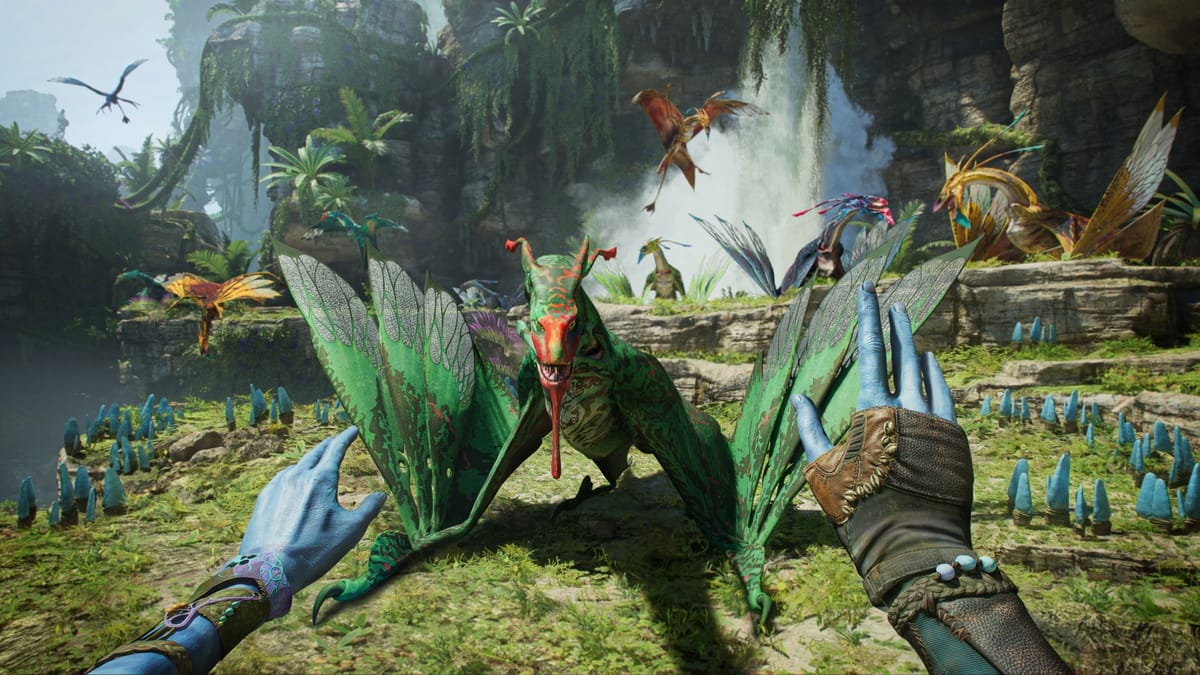
James Cameron’s Avatar was, in all honesty, an OK film. It was nice to look at, but the story, characters, writing, and everything else left little to no impression on me. Still, the moon of Pandora is a fascinating place inhabited by the equally interesting cat-like Na’vi people. Sure its environmentalist and anti-colonialist themes are the equivalent of hitting a nail with a brick, but I think that’s what we need right now. With this in mind, I have high hopes for Ubisoft’s Avatar: Frontiers of Pandora. We were able to play about two hours of the game over a remote session, and while I can tell I need the full game to properly judge it, it has unique and interesting ideas that may deliver on the promise of Avatar.
Frontiers of Pandora follows a Na’vi who was kidnapped by a corporation known as the RDA as a child. After a series of events including 15 years in cryosleep, you’re now a stranger in your own home. To defeat the RDA, you need to learn about your roots, reconnect with your senses, and prove yourself to other Na’vi clans.
The preview didn’t make the best first impression unfortunately, starting me in the middle of the wilderness on a mission to gather Mangrove Hive Nectar. What does that look like and where can you find it? Well I spent the next 20 minutes or so trying to figure that out. During this time, I did get to figure out the controls and weapons. Holding RB will activate your Na’vi senses, showing you quest markers, interactables, enemies and animals, and points of interest in the distance. LB meanwhile brings up the weapon wheel where I had access to four weapons: the Longbow, the Heavy Bow, an Assault Rifle, and a Staff Sling. The Longbow became my go-to for stealth and fighting mechs thanks to its explosive arrows, but the assault rifle was great for running and gunning or flying and gunning later on. I didn’t experiment too much with the heavy bow or sling, but I imagine the former is a longer range but slower stealth option and the sling is something like a grenade launcher.
Eventually my demoist took pity on me, showing me how to pin and mark the nectar in the Hunter’s Guide menu, then find it using Na’vi senses. Pinned items will show up as bright yellow, while quest markers are a deep green. Before we move on to the good from my time with the game (and there was a lot to enjoy), I’d like to point out that it is very difficult to see the quest marker at times in the dense jungles of Pandora where the dominant color is… also deep green. While I cannot show you the world map, I also find it too minimalist to be very useful. All the icons are small pips of color, making what is important like fast travel or quest locations more difficult to parse that it should be. We’ve still got time until launch, so hopefully the user experience here can be shored up.
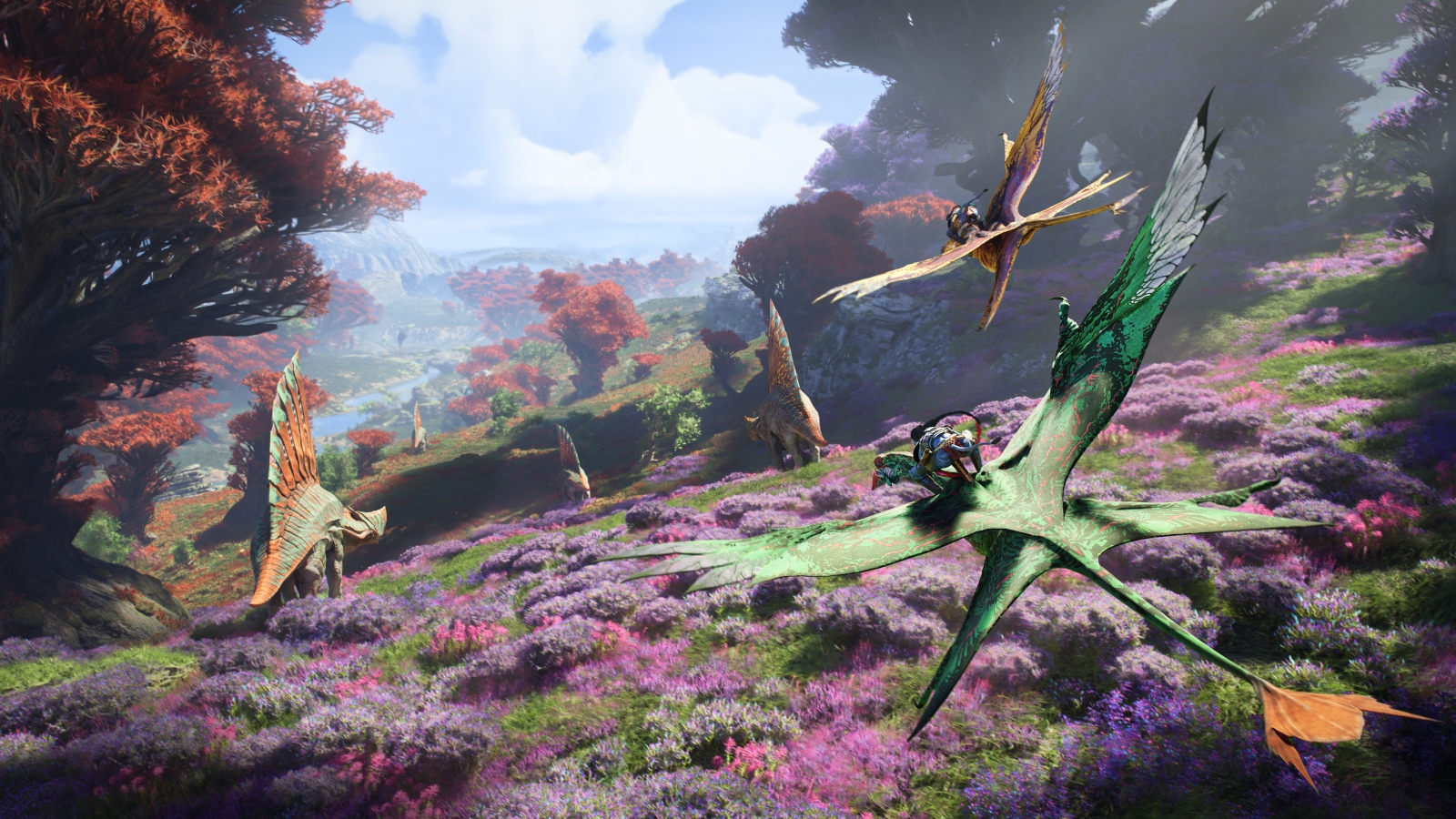
Once I had a bit of direction, I was able to find the fruit using the hints in the quest log, cross referencing it with the map to reach the general area, then using my Na’vi sense to see the nectar. Despite the rocky start, I really like this more loose style of navigation, it’s part of why I love Assassin’s Creed Valhalla. I get tired of just following quest markers in every single open world game, and it’s nice to have some trust put in me as a player to get to know and navigate the world. Once I got to the nectar, there’s a small fruit picking minigame requiring you to find the right angle with the left stick then start pulling with RT so as not to damage the harvest. When hunting animals, you’ll also want to use arrows to not damage your kill, then make sure you have time to pay your respects before retrieving all the usable parts of the animal. I didn’t know this initially, and was still being attacked by wolf-like creatures while playing my respects. Still, I really like this feature as it incentivizes actually thinking about what you’re gathering rather than just looting everything not nailed down, emphasizing the environmentalist themes.
Exploring and moving around the world is easily the best part of Frontiers of Pandora, which we really get into the meat of in the next quest which sees you climbing a mountain of sorts called the Ikran Rookery to prove yourself to a flying creature called an Ikran. There’s absolutely no combat here, just you, the mountain, and an Ikran to choose you. Finding my way up the mountain felt very natural, with multiple paths emerging as sprinted up. It’s a ton of fun to see how fast you can go, utilizing the best route, making use of your charge jump and slight air dash as well as plants on the ground that will give you a burst of speed when run over. It’s not quite Mirror’s Edge (Catalyst couldn’t even capture that exhilaration), but it comes close navigating this structure along with some floating islands.
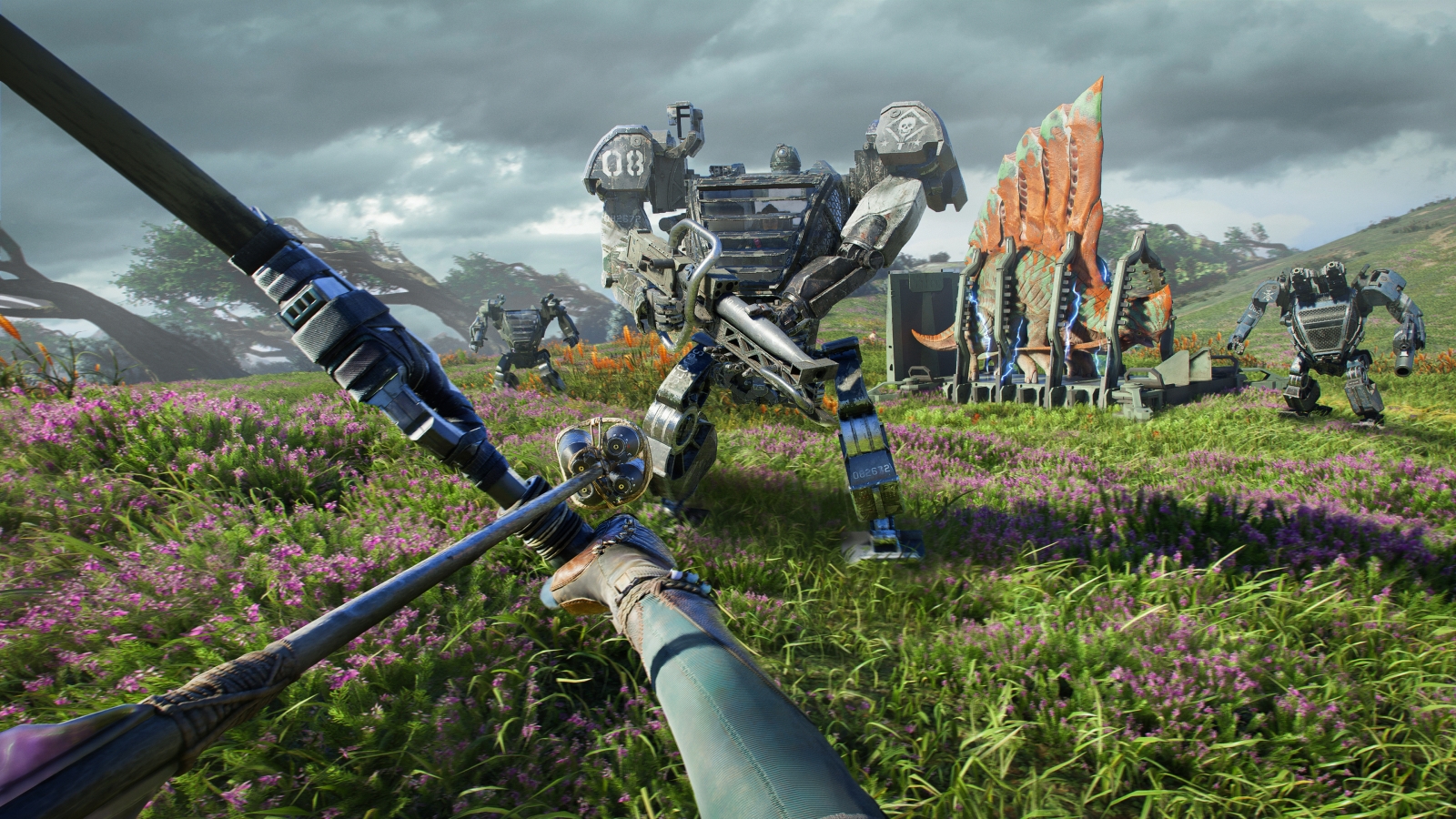
There’s a bit of puzzle platforming as well, with the occasional door-esque plant blocking your way. To open these, you need to interact with Gateway Lillies connected to the larger portal. On the way up the rookery, I discovered you can also shoot the lillies for the same effect, which is a neat prospect for future puzzles, especially given the significant dropoff arrows experience.
After reaching the top, I bonded with an Ikran I then named Floof, and we soared into the sky together. Flying through Pandora is delightful, as I’ve always been a sucker for floating islands. You can fly low as well, skimming over water and dodging trees. Overall it reminds me a bit of Star Fox, which is always a good thing. You can land on most surfaces by flying close and pressing B, or just jump off at any point and skydive – though there is fall damage. Since Na’vi bond with creatures using their weird braid/tentacle thing, you do need to consider your new friend’s needs as well as your own. There’s a hunger meter at the bottom of the screen, and eating will fill it back up as well as grant you a buff like increased movement speed. I’m usually wary of survival mechanics in games not focused on them, but it works well here as a way to incentivize hunting, gathering, and cooking.
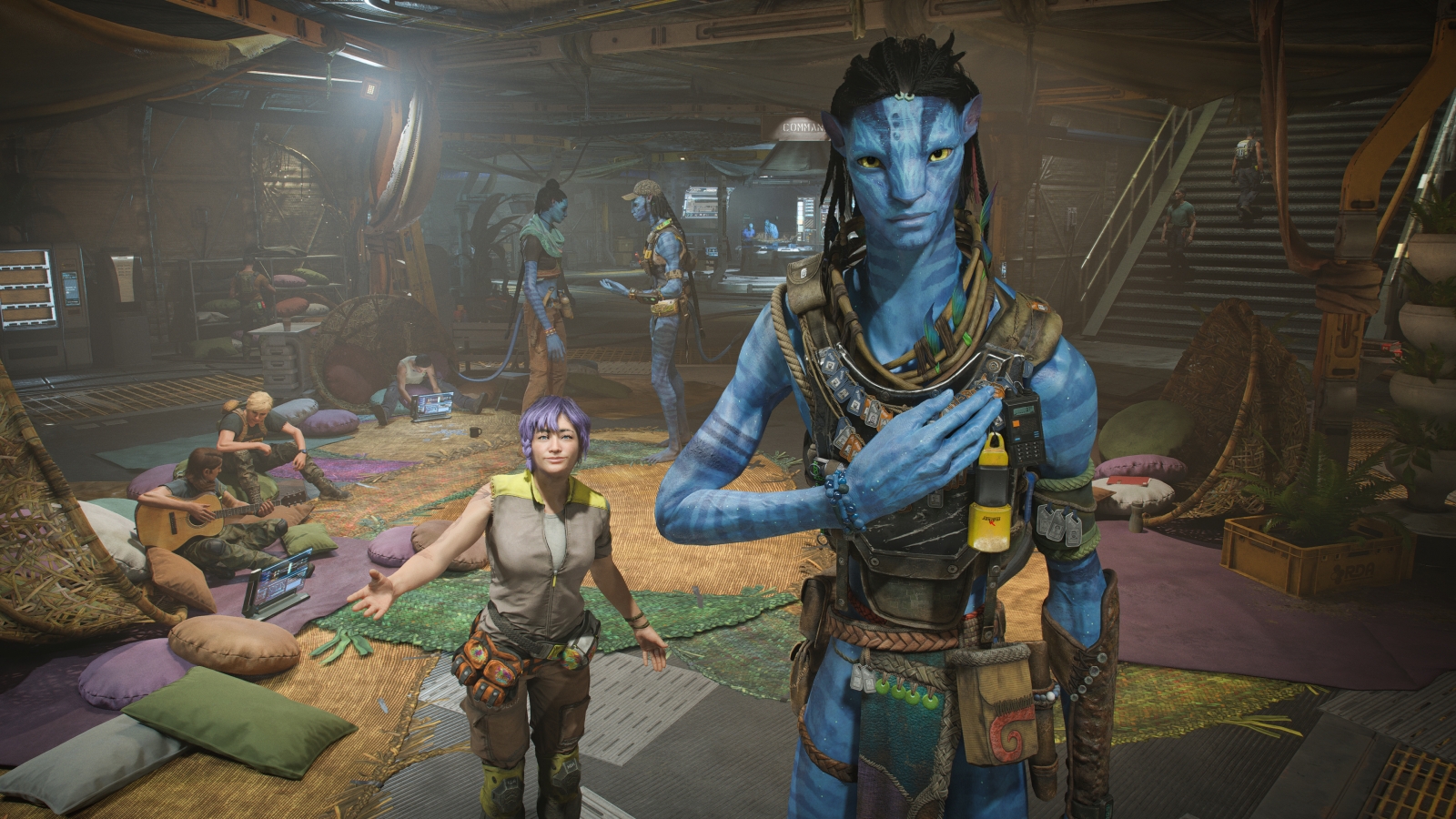
The next mission immediately thrust me into some aerial combat, battling helicopters and diving down to floating platforms to send them crashing down. Fighting on your Ikran functions just like it does on the ground, but with a hefty amount of auto-aim so you can instead focus on dodging. I found the assault rifle to be the most effective here, but it doesn’t have a ton of ammo so make every shot count. It feels incredibly cool to seamlessly switch from aerial to ground combat, taking out RDA craft like a one Na’vi army. You are pretty fragile though, so make sure to actually avoid bullets and not run into them.
For the final story mission, I had to infiltrate an RDA base to disable various mechanisms that were harming the rainforest and the nearby Aranahe clan. To gain the clan’s trust and assistance in the fight against the RDA, we first have to show them you can fight back. This was definitely the most “Ubisoft” mission, but I do still find their checklist style of games enjoyable in their own way. I started off trying to stealth my way through, taking out individual soldiers with arrows, but mechs are difficult to take out silently. Eventually I got caught and had to fight my way through the rest of the base, using the interior to funnel them into more manageable groups. It was a decent section, but I wanted to get back into the forest as soon as possible for what makes this game unique and interesting.
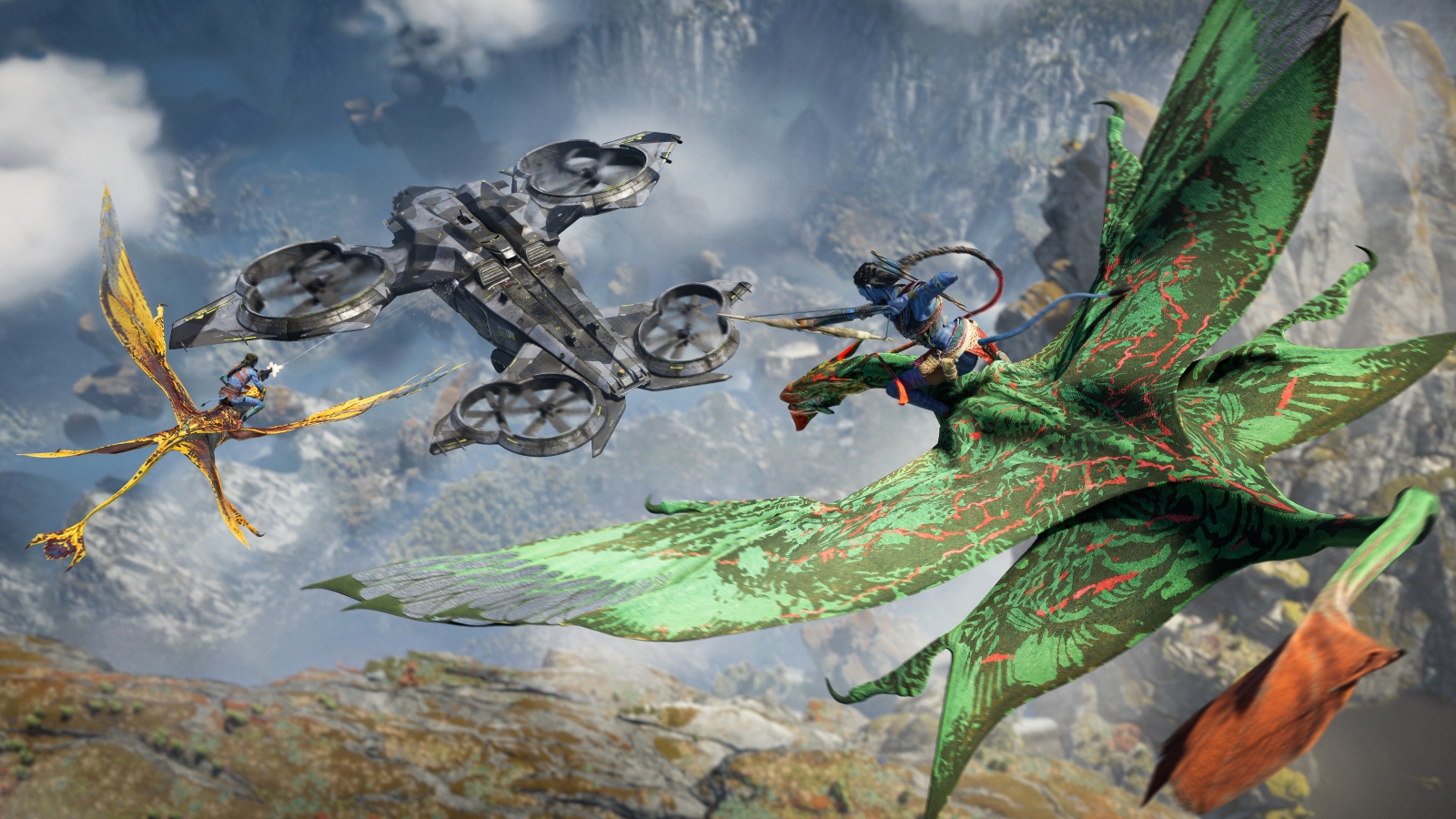
I certainly enjoy the exploration, flying, and platforming much more, so hopefully future bases will find ways to spice things up. I know the teams at Ubisoft are incredibly talented, and I want to see their creativity thrive rather than making several very similar games one after another. I could see that spark in a lot of Avatar: Frontiers of Pandora, but whether its lights a fire remains to be seen in the full game.
